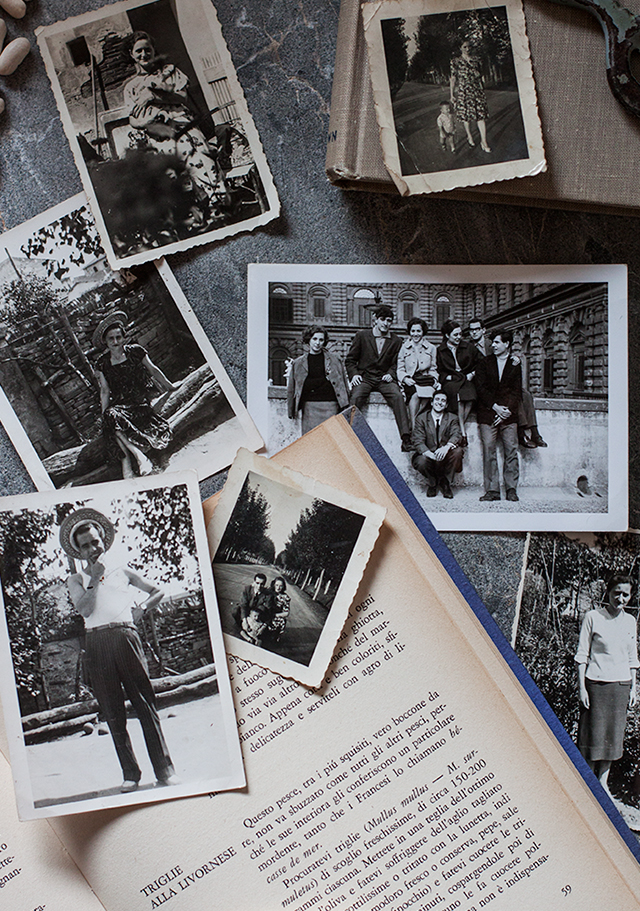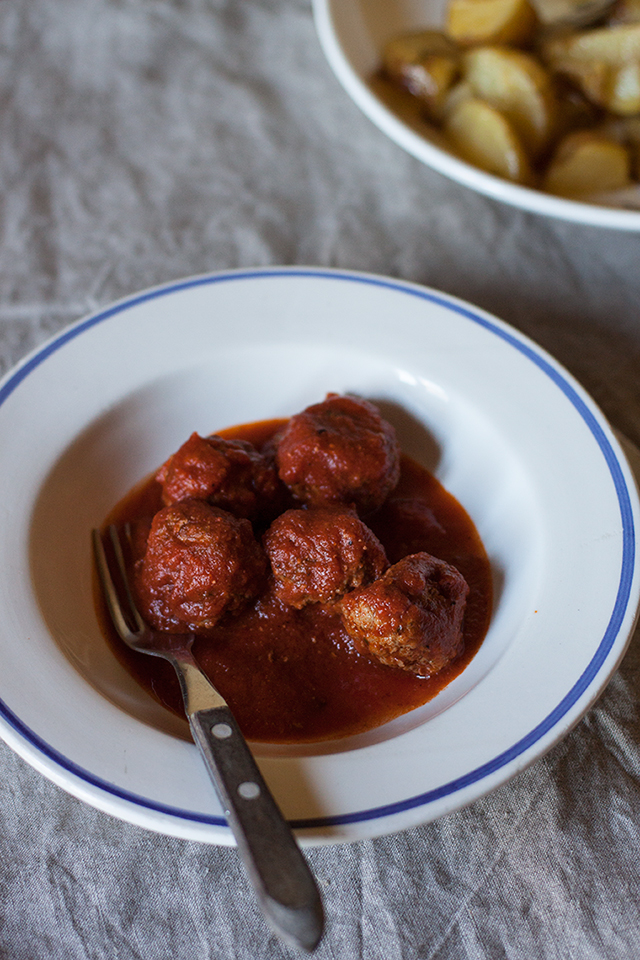
There’s a story in my Tuscan family of nobility and forbidden love. It’s set in Taranto, Puglia, on Italy’s southern heel and involves my daughter’s great-great-grandmother. The best known version is told by my husband Marco’s uncle, Riccardo, who remembers it being told to him by his elderly Nonna Anna herself. Anna Michela Comasia Maria Calianno. Her long name was a sign of her family’s noble status. She was born in Taranto, Puglia, in 1889, into a wealthy, well-educated Tarantine family of physicians, surgeons and landowners.
One day, by chance, young Anna answered the door instead of the butler. There was Nicola Cardellicchio, the postman. He came from a poor family of bricklayers and wool spinners, raised by a single mother. “He was no adonis,” noted Nonna Anna. Nicola was rather short and stocky, but she liked him immediately. She continued answering the door whenever the postman passed.
When Anna’s mother, Girolama, noticed her daughter’s growing interest in the postman, she forbid her to see him again, threatening to disown her. So Anna did what any lovesick girl would do: she ran away, eloping with Nicola. The couple had nine children in Taranto — Mario, Marco’s grandfather was born in the middle of the First World War — but times were very hard, and they moved north to Torino to look for work.
Nonna Anna was perhaps not an instinctive cook. I wondered whether she ever had the possibility to learn how to cook. Her grandchildren, Angela (my mother in law) and Riccardo, remember her only ever making lesso (boiled meat) and these polpette, which became variously known in the family as “sugo di nonna Anna” and, oddly, “amatriciana” (which is actually a different recipe, a chilli-spiked sauce of fried guanciale and tomato to coat pasta).
But these polpette – plump meat balls, cooked slowly in tomato sauce, a very traditional dish from Puglia – were passed down to Anna’s daughter in law, Angela’s Tuscan mother, Lina, who made them so often for her own family that she in turn taught her daughter in law, Franca, Riccardo’s wife, who continues to make them today for her own grandchildren and great-grandchildren. It has become this Tuscan family’s recipe, spread throughout the branches of the family tree, made for guests and special occasions especially (it feeds a crowd wonderfully).
Almost everyone makes it exactly the way Nonna Anna did, which has a couple of curious steps: she would slice the onion, fry it in a generous dose of olive oil, then, once softened, she would remove them with a slotted spoon. Then she would fry pancetta in the same oil, and again, once crisp, remove them. Then this onion and pancetta-infused oil was used for making the sauce. I pressed the women in the family to explain why this would be part of the recipe. It seems fiddly, messy and most of all, wasteful — who would throw away pancetta? “Ma non va fatto,” says Franca, noting that you really shouldn’t remove the onion and pancetta. Angela, the traditionalist, protests, “But that’s the recipe!” Perhaps Anna wanted a perfectly smooth sauce without pieces of pancetta floating in it – just their essence. But I’m with Franca, who leaves the pancetta in the sauce.
Traditionally, this is a dish that can be stretched to two courses (or two dinners). The sauce is used to dress bucatini — Mario’s favourite — which can be eaten as the first course, then the rest of the polpette and leftover sauce are served as the main dish, which goes nicely with roast potatoes and a crisp salad.

Polpette di Nonna Anna
Nonna Anna’s meatballs
Serves 6
1 kg mince meat (a mixture of beef and pork is preferable)
2 eggs
100 grams grated parmesan
2 tablespoons finely chopped fresh parsley
1 teaspoon salt, plus more to taste
black pepper, to taste
60 ml extra virgin olive oil
1 large onion, finely sliced
80 grams rigatino or pancetta, finely sliced
700 ml tomato passata
700 ml water
Combine the minced meat, eggs, parmesan, parsley, salt and pepper in a large bowl. Mix very well – hands are always best – until you have a firm, well-amalgamated mixture. Shape into balls a little larger than golf balls. Set aside.
Heat the olive oil over medium heat in a casserole pot. Sear the polpette in batches until they are just browned evenly on the outside, 2 minutes each batch, then remove to a plate – you don’t need to cook them through, you just want them to colour. Turn heat down to low and gently fry the onion slices with a pinch of salt until tender and translucent. Anna would have removed the onion with a slotted spoon and discard it at this point. I leave it in and add the the pancetta, letting it cook until the fat has rendered and become slightly crisp. You can remove them if you like, too, and keep for another purpose or keep them in. I do the latter.
Add the tomato puree, fill the empty bottle with water and add that too. Season with salt and pepper and bring the sauce to a simmer. Return the polpette back to the pot and let the sauce simmer gently for 1 hour, uncovered, stirring occasionally. If you find the sauce is becoming too thick too quickly, you can add a little water at a time. You want a thick, well-seasoned and abundant sauce. You can serve the polpette, coated in a little of the sauce, as a main dish, keeping the rest of the tomato sauce for another day or another course, dressing some spaghetti or bucatini.




Comments
I love polpettes. My best are from minced beef and pork shoulder (or lamb shoulder/leg). I do not fry them, just bake in oven like Rachel 😉 So they fry in own fat. Texture is more creamy and crispy outside 🙂
From Poland with love 🙂
I do think that a mixture of meat is always a good idea! Baking is a nice idea too, though I can hear my mother in law in the background saying, “But that’s not the recipe!” 🙂
When we’re in kitchens alone, we do many nasty things, that aren’t in classical recipies… 😀 My mother in law is not a sentinel of polish cuisine, better!, she learn from me (now she know i.e. how to make margherita; she loved pasta and good olive oil ;)).
I love stories like that Emiko. I have heard many similar stories from my family in Italy. My imagination runs wild when I hear them! Brave to change these ancient recipes!! Ha! x
It’s special to have old recipes, even with their long traditions with that “stamp” of a family member on them. It’s the thing that makes it that family recipe. I’ve noticed, though, my mother in law recently leaving the pancetta and onion in the sauce lately!
The meatballs looks delicious – I would love to try but I am hesitant because I don’t see a binder….no breadcrumbs? do they fall apart easily? Thank you!
No, not at all. In fact, the breadcrumbs don’t serve to bind meatballs but to soak up excess moisture. The binder is the egg. If you mix really well — bare hands are the best way — really, really well, you will see the mixture begin to become thicker, more sticky rather than wet. So rather than having to add breadcrumbs to soak up the moisture, the trick is to mix the minced meat and egg really well together, then you don’t need them and you have tender meatballs.
I’m convinced that making polpette is one of the ways Nonna says ‘ti amo’ to the grandchildren. Her ‘recipe’ (for whatever reason) calls for the meatballs to get a quick blanch in boiling water before going into the sauce. Not sure if that goes back to the day before you could chose leaner cuts for ground meat, or the lack of oven space or.. but it doesn’t matter. She does it and as counterintuitive as I find it to be, if my son asks for polpette, he means how Nonna makes them, and this is just how it’s done.
I love this! Yes, it’s the same reasoning my mother in law gives and it’s what makes it that particular heirloom recipe, isn’t it? xx
This is a beautiful recipe, I love how you have included the original version but have stuck with your guns with your alterations. I am living in Melbourne and am making this today for my family with kangaroo mince! I will include lots of pancetta to make up for the leanness of the roo x
Oh that sounds wonderful, would love to know how it turns out!
Made these for the second time this week. They are great. I have a question: for some reason both of the times the meatballs came out more on the chewy side rather then tender as you’ve described. I wonder what could it be? I have made with beef only and have dropped the parmesan. Maybe I have worked the mixture too much with my hands ? Maybe I have fried it too much? Ot cooked … Kind of meat? I dont know… Hope you have a direction. Thanks!
I’m sorry to hear that! What I think it most likely would be is the parmesan missing! The meat also could be too lean, a little bit of fat (from the meat or the parmesan) helps to contribute to that tenderness. If you don’t want to use parmesan, try some breadcrumbs instead (I would say a handful or more), or a slice or two of stale bread (no crusts) soaked in milk to soften and break it up, and add this to the mixture instead of the cheese, this can help make them juicy and tender.